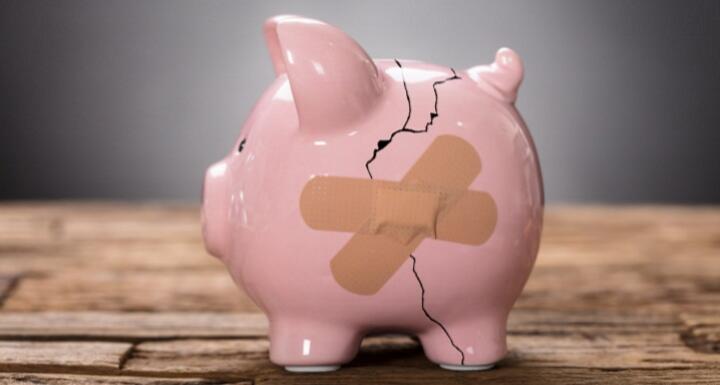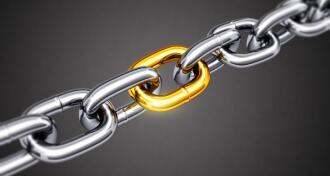From April 3 through April 14, 2020, the Small Business Administration ("SBA") has guaranteed over one million loans under the Paycheck Protection Program ("PPP"). Over 4,600 lenders throughout the U.S. have been tasked with serving as conduits for distributing $349 billion in federal loan funds made available for the PPP, with approximately $296 billion dollars having already been approved for distribution in eleven days. The average PPP loan amount so far has been $239,000, though the vast majority of approved loans (70%) have been for $150,000 or less.
Lenders have felt the urgency in which business applicants wish to obtain loan funds to maintain payroll and business operations during the COVID-19 crisis, while understanding that gaps in loan guidance are creating hesitancy amidst applicants and lenders who want to understand how these loans can ultimately be forgiven. With each loan application comes a unique set of facts, issues, and needs, and the SBA's guidelines to borrowers and their lenders are constantly catching up to the pace of loan issuance.
On April 14, 2020, the SBA issued additional Interim Rules which specifically address applicants consisting of individuals who file a Form 1040, Schedule C.
The Rules for Applicants who file a Schedule C:
Individuals with income from self-employment who file a Form 1040, Schedule C, are eligible for a PPP loan if:
(a) they were in operation on or before February 15, 2020, and
(b) they have self-employment income, and
(c) their principal place of business is in the United States; and
(d) they filed or will file a Form 1040 Schedule C for 2019.
They must provide the Schedule C, along with a 2020 invoice, bank statement, or other evidence to establish that they were in operation on or around February 15, 2020.
Individuals with income from self-employment from 2019 for which they can file a 2019 Form 1040 Schedule C cannot consider expenses incurred between January 1, 2020 and February 14, 2020.
Applicants will also need to submit Form 941 if they have employees, and state quarterly wage unemployment insurance tax reporting forms (with evidence of retirement and health insurance contributions)
Additional Information:
SBA will issue further guidance for those individuals who were not in operation in 2019, but who were in operation on February 15, 2020, and who will file a Form 1040 Schedule C for 2020.
A partner in a partnership cannot apply for a PPP loan; instead, the partnership must apply for the loan by reporting the self-employment income of the active general partners as a payroll cost.
How much can a self-employed individual borrow?
Calculating the maximum PPP loan amount for self-employed individuals who file 2019 Schedule Cs depends on whether or not the applicant employs other individuals.
If the applicant has no other employees:
- Use the Net Profit amount reported on line 31 of Form 1040 Schedule C filed in 2019. (If you have not yet filed a 2019 return, fill out a Schedule C now – you do not have to file it yet, but you must submit it to the lender.) If the amount is over $100,000, use $100,000 in this step. If the amount is $100,000 or less, use that amount. If the amount is $0 or less, the applicant is not eligible for a PPP loan.
- Divide the Net Profit by 12
- Multiply by 2.5
- Add the amount of any Economic Injury Disaster Loan ("EIDL") made to you between January 31, 2020 – April 3, 2020 that you seek to refinance, less the amount of any EIDL Advance that you received.
If the applicant has employees:
- Use the Net Profit amount reported on line 31 of Form 1040 Schedule C. If the amount is over $100,000, use $100,000. If the amount is $100,000 or less, use that amount. If the amount is $0 or less, use $0.
- Add 2019 gross wages and tips paid to your employees whose principal place of residence is in the U.S. computed using 2019 IRS Form 941 from each calendar quarter plus any pre-tax employee contributions for health insurance or other fringe benefits excluded from Taxable Medicare wages & tips
- Subtract any amounts paid to any individual employee in excess of $100,000 annualized
- Add 2019 employer health insurance contributions, retirement contributions, and state and local taxes assessed on employee compensation
- Divide this total sum by 12
- Multiply by 2.5
- Add the amount of any Economic Injury Disaster Loan ("EIDL") made to you between January 31, 2020 – April 3, 2020 that you seek to refinance, less the amount of any EIDL Advance that you received
How can self-employed individuals use loan proceeds?
PPP loan proceeds can be used by self-employed individuals to cover owner compensation replacement, employee payroll costs, mortgage interest payments on business mortgage obligations on real or personal property, and business rent and utility payments. However, these expenses must have been claimed (or must be claimed) on the 2019 Form 1040 Schedule C for them to be a permissible use during the eight-week period following the first disbursement of the loan.
Furthermore, interest payments on any other debt obligations incurred before February 15, 2020 can be paid with PPP loan funds, though those amounts are not eligible for PPP loan forgiveness. Finally, if an EIDL loan was obtained between January 31, 2020 and April 3, 2020 and used for payroll costs, your PPP loan must be used to refinance the EIDL loan, though such amounts will not be forgivable.
At least 75% of the PPP loan proceeds must be used for payroll costs. The amount of any refinanced EIDL used for will be included in the calculation of "payroll costs."
What part of the loan will be forgivable?
Amounts that are forgivable will include:
- Payroll costs including salary, wages, and tips (for 8 weeks, a maximum of $15,385 per individual) as well as covered benefits for employees. Although the SBA's rule is not entirely clear, it appears that benefits for owners are not included in the payroll cost calculation.
- Owner compensation replacement, with forgiven amounts limited to eight weeks' worth (8/52) of 2019 net profit, but excluding any qualified sick leave equivalent for which a credit is claimed under Section 7002 of the Families First Coronavirus Response Act ("FFCRA") or qualified family leave equivalent amount for which a credit is claimed under section 7004 of FFCRA.
- Payments of interest on mortgage obligations on real or personal property incurred before February 15, 2020.
- Rent payments on lease agreements in place before February 15, 2020.
- Utility payments under service agreements dated before February 15, 2020.
Conclusion
This most recent SBA guidance is positive and helpful information for many self-employed individuals. We will continue to keep you updated as we receive further information.









